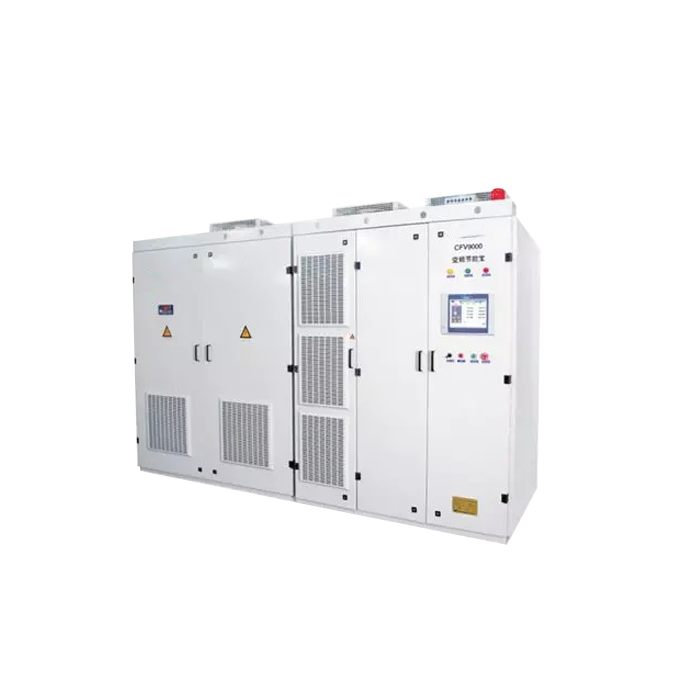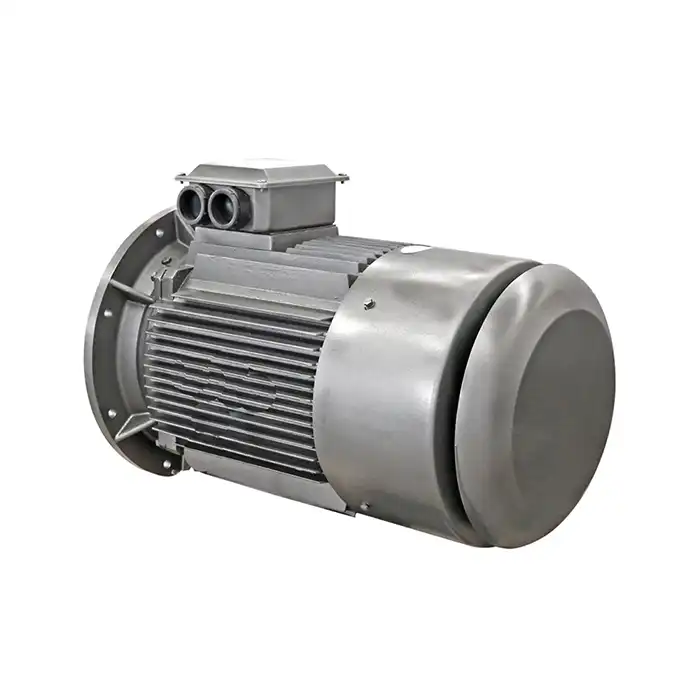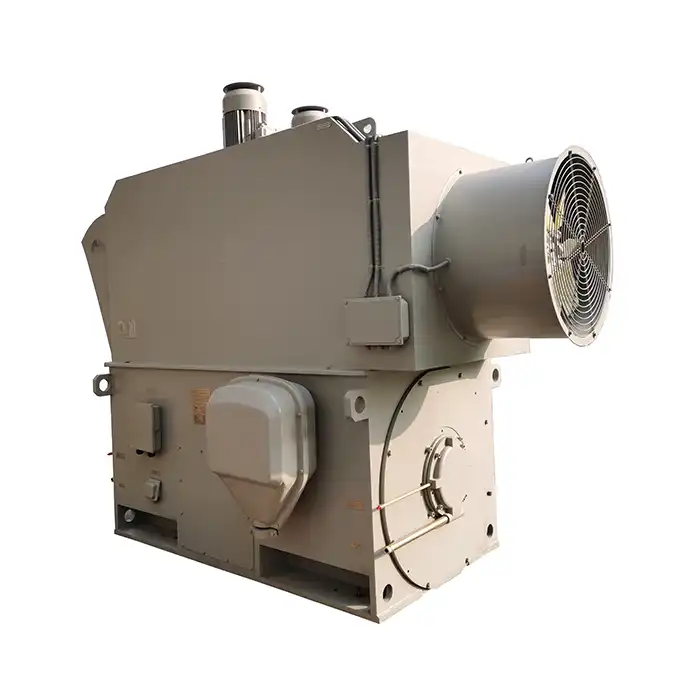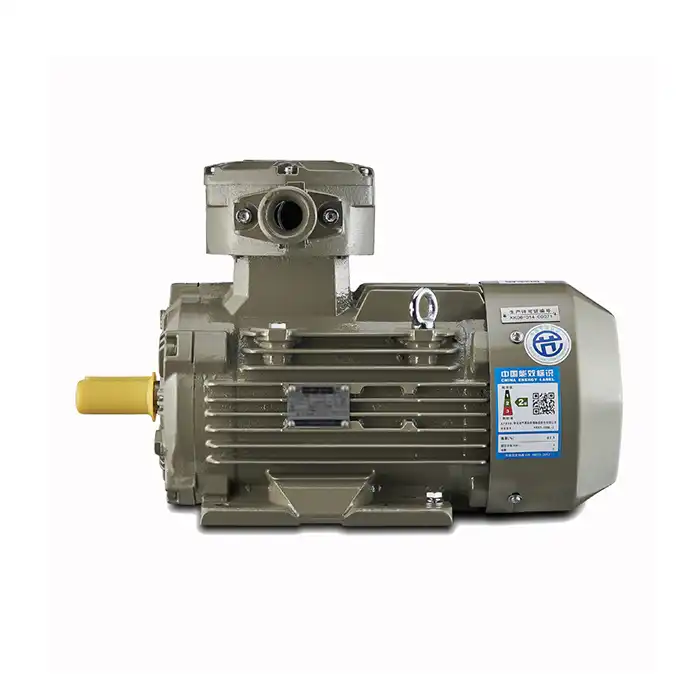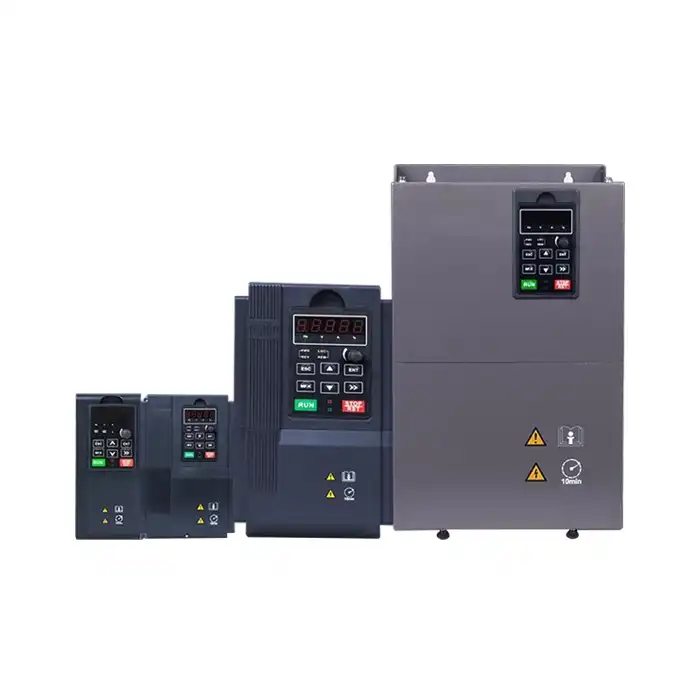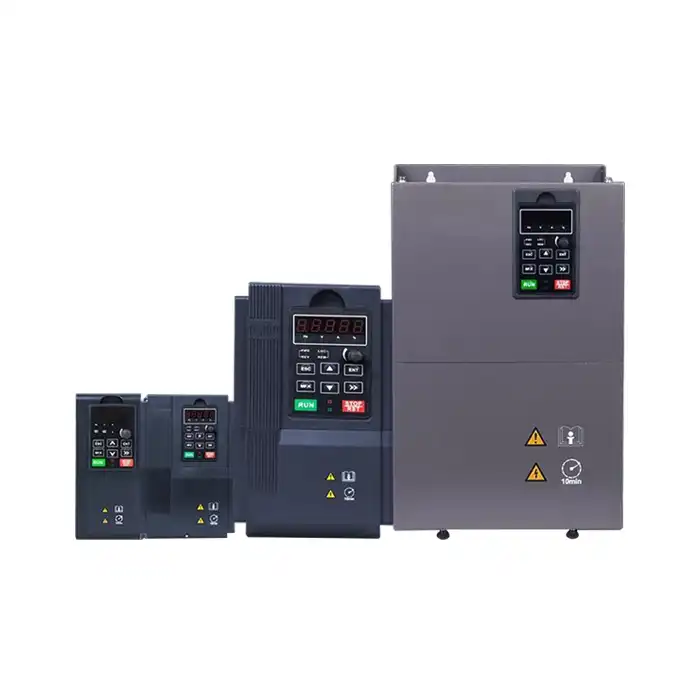How to select the right IEC LV motor for a pump application?
For the best performance, energy savings, and long-term dependability, it is important to choose the right iec low voltage motor for your pump application. This complete guide will show you the most important things you need to think about when picking an iec low voltage induction motor for your pumping needs.
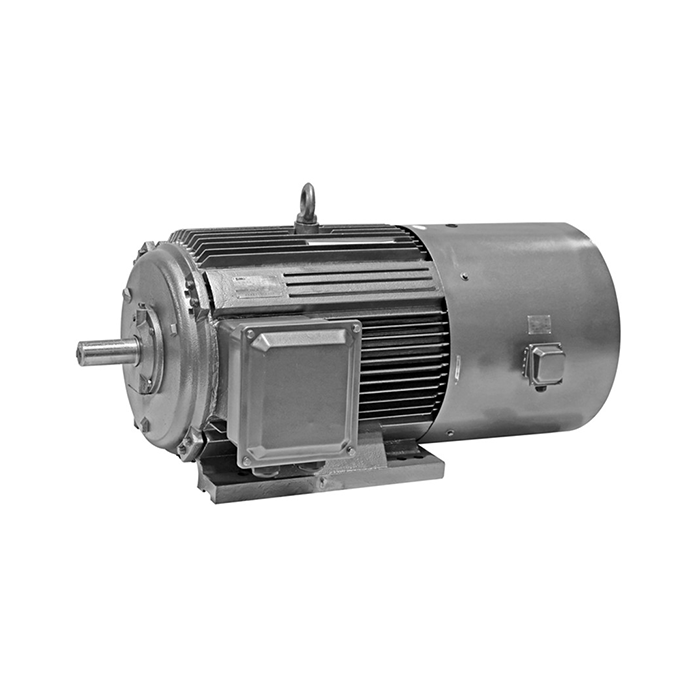
Series:YVFE4
Frequency conversion range:30hz~50hz,5hz~70hz,5hz~100hz
Power range:0.75-1000kW
Protection level:IP55
Application:are suitable for driving various mechanical equipment that require continuous and frequent forward and reverse rotation, such as steel rolling, lifting, transportation, machine tools, printing and dyeing, papermaking, chemicals, textiles, pharmaceuticals, etc., and can be used with various domestic and foreign variable frequency power supplies.
Advantage:high efficiency, wide speed range, high precision, stable operation, and easy operation and maintenance.
Certificate:installation dimensions comply with International Electrotechnical Commission (IEC) standards.
Others: SKF, NSK, FAG bearings can be replaced according to customer requirements.
Key Selection Criteria: Power, Speed, and Torque Requirements
When selecting an IEC LV motor for a pump application, it's essential to consider the following key criteria:
Power Requirements
When selecting an iec low voltage induction motor for a pump application, it's essential to consider the following key criteria:
- Calculate the pump's power consumption based on flow rate and head pressure: First, determine the pump's power consumption, which relies on flow rate and head pressure. The flow rate is the volume of fluid the pump must move, while the head pressure is the resistance it must overcome to raise the fluid. Both variables affect motor power needs.
- Account for system inefficiencies and potential power losses: No system is 100% efficient, so it's important to account for potential energy losses due to factors such as friction in the piping, pump wear, or other mechanical losses. These inefficiencies will cause the motor to work harder, so consider the added energy demand when selecting the motor.
- Choose a motor with a power rating slightly higher than the calculated requirement for optimal performance: Choose a motor with a power rating somewhat higher than the projected demand after analyzing power consumption and inefficiencies. So the motor can tolerate power spikes and variable demands without overloading or failing. Adding power ensures the pump runs smoothly in various settings.
Speed Considerations
The speed of the motor directly affects the pump's performance. When selecting motor speed:
- Determine the required pump speed for your specific application: The required pump speed is based on your specific application needs, such as flow rate and head pressure. Ensure that the selected motor speed aligns with the operational demands of the pump to achieve optimal performance.
- Consider using a variable frequency drive (VFD) for applications requiring speed control: For applications that require variable speed control, using a VFD can be beneficial. A VFD allows for precise control over the motor speed, helping to optimize energy use and maintain consistent pump performance under varying conditions.
- Evaluate the trade-offs between high-speed and low-speed motors in terms of efficiency and maintenance: High-speed motors are faster but use more energy and require more maintenance. While energy-efficient, low-speed motors may need larger designs and present mechanical problems. Choose the best alternative by comparing efficiency, longevity, and system requirements.
Torque Analysis
Understanding the torque characteristics of your pump is crucial for proper motor selection:
- Assess the starting torque requirements of your pump
- Consider the running torque needed throughout the pump's operation
- Ensure the selected motor can provide adequate torque across the entire speed range
How Do IE Efficiency Classes Impact Pump Operating Costs?
The International Electrotechnical Commission (IEC) has established efficiency classes for electric motors, including the iec low voltage induction motor, which play a significant role in determining the operating costs of pump systems.
Understanding IE Efficiency Classes
IE efficiency classes range from IE1 to IE4, with higher numbers indicating greater efficiency:
IE1: Standard Efficiency
IE2: High Efficiency
IE3: Premium Efficiency
IE4: Super Premium Efficiency
Impact on Operating Costs
Choosing a motor with a higher IE efficiency class can significantly reduce operating costs:
Lower energy consumption leads to reduced electricity bills: Higher-efficiency motors use less energy to do the same job. cheaper energy consumption means cheaper electricity costs, which can add up to big savings over time. In continuous or high-demand sectors, energy reductions can significantly reduce operational expenses.
Improved efficiency results in less heat generation, potentially extending motor life: Heat is produced less by an efficient motor. This is critical because excess heat can damage components, shorten motor life, and increase maintenance costs. By choosing an efficient motor, you reduce overheating, which extends its life and maintains consistent performance. Lower heat generation can make industrial workplaces safer.
Higher efficiency motors may have a higher initial cost but often provide substantial long-term savings: Despite their higher upfront cost, high-efficiency motors often save more over time. Efficiency improvements minimize operational expenses, maintenance, and repairs. The greater purchase price is mitigated by energy savings and motor lifespan, making it a long-term financial investment.
Calculating Cost Savings
To determine the potential cost savings of a higher efficiency motor:
Compare the efficiency ratings of different motor options: Begin by comparing the efficiency ratings of different motor options. Higher efficiency motors will consume less energy to achieve the same performance, so it's important to select one that offers the best balance between energy use and performance for your application.
Calculate the energy consumption based on your pump's duty cycle: Next, calculate the energy consumption of each motor option based on your pump's duty cycle. This includes factors like the operating hours, load conditions, and power required. The more efficient the motor, the lower the energy consumption over time.
Estimate the annual energy cost savings and payback period for the more efficient motor: Finally, estimate the annual energy cost savings by comparing the energy consumption of the selected motor with a less efficient alternative. Using this data, calculate the payback period—the time it will take for the higher efficiency motor to pay for itself through reduced energy costs. This will give you a clear idea of the long-term financial benefits of your choice.
Choosing the Correct IP Rating for Wet or Dusty Environments
The Ingress Protection (IP) rating of a motor is crucial for ensuring its longevity and reliability in challenging environments. For applications requiring the iec low voltage induction motor, understanding the IP rating is essential.
Understanding IP Ratings
IP ratings consist of two digits:
- The first digit (0-6) indicates protection against solid objects and dust
- The second digit (0-8) indicates protection against water ingress
Common IP Ratings for Pump Applications
Several IP ratings are commonly used in pump applications:
IP55: Protected against dust and low-pressure water jets
IP65: Dust-tight and protected against low-pressure water jets
IP66: Dust-tight and protected against powerful water jets
IP67: Dust-tight and protected against temporary immersion
Selecting the Appropriate IP Rating
To choose the correct IP rating for your pump motor:
Assess the environmental conditions where the pump will operate: Begin by evaluating the operating environment of the pump, including factors such as temperature, humidity, and exposure to dust or moisture. This will help you determine the level of protection needed for the motor to perform effectively and reliably.
Consider potential exposure to dust, water spray, or submersion: Depending on the application, the pump motor may be exposed to dust, water spray, or even submersion. For environments with frequent water contact or where the motor will be submerged, a higher IP rating (such as IP67 or IP68) would be necessary to protect against water ingress.
Select a motor with an IP rating that exceeds the minimum requirements for your application: Choose a motor with an IP rating that exceeds the minimum requirements for your specific application. By selecting a motor with a higher IP rating, you ensure that it is adequately protected against the environmental challenges it may face, which will ultimately improve the motor's lifespan and reduce maintenance needs.
Conclusion
Selecting the right IEC LV motor for your pump application requires careful consideration of power requirements, speed, torque, efficiency class, and environmental protection. By taking these factors into account, you can ensure optimal performance, energy efficiency, and longevity of your pumping system. Remember to consult with experienced professionals or motor manufacturers for guidance on your specific application needs.
FAQ
1. What is the difference between an IEC motor and a NEMA motor?
IEC (International Electrotechnical Commission) and NEMA (National Electrical Manufacturers Association) are two different standards for electric motors. Iec motors are widely used globally, while NEMA motors are more common in North America. The main differences lie in their frame sizes, mounting dimensions, and performance characteristics.
2. Can I use a single-phase motor for a pump application?
While single-phase motors can be used for some small pump applications, three-phase iec low voltage induction motors are generally preferred for industrial and commercial pumping systems due to their higher efficiency, better starting characteristics, and ability to handle larger loads.
3. How often should I perform maintenance on my pump motor?
The maintenance frequency for pump motors depends on various factors, including the operating environment, duty cycle, and motor type. Generally, it's recommended to perform basic inspections monthly and more comprehensive maintenance annually. Always consult the manufacturer's guidelines for specific maintenance recommendations.
Choose XCMOTOR for Your IEC LV Motor Needs
When you need to find the best iec low voltage induction motor for your pump application, XCMOTOR is the company to work with. Thanks to our wide selection of high-quality motors and our technical know-how, you're sure to find the right solution for your needs. With a focus on durability and energy economy, XCMOTOR's products are made to get the most out of your pump while keeping costs as low as possible. Contact our team of experts today at xcmotors@163.com to discuss your motor needs and discover how we can help you maximize the efficiency and reliability of your pumping systems.
XCMOTOR, a leading iec low voltage induction motor manufacturer, is committed to providing creative and cost-effective solutions for all of your motor needs.
References
1. International Electrotechnical Commission. (2022). IEC 60034-30-1: Rotating electrical machines - Part 30-1: Efficiency classes of line operated AC motors (IE code).
2. Hydraulic Institute. (2021). Pump Systems Matter: Motor and Pump Selection Guidelines.
3. European Commission. (2023). Energy Efficiency Directive: Electric Motor Regulations.
4. American Society of Mechanical Engineers. (2022). ASME B73.1: Specification for Horizontal End Suction Centrifugal Pumps for Chemical Process.
5. U.S. Department of Energy. (2023). Motor Systems Tip Sheet #1: When to Purchase NEMA Premium Efficiency Motors.
6. International Organization for Standardization. (2022). ISO 20816-3: Mechanical vibration — Measurement and evaluation of machine vibration — Part 3: Industrial machines with nominal power above 15 kW and nominal speeds between 120 r/min and 15 000 r/min when measured in situ.



